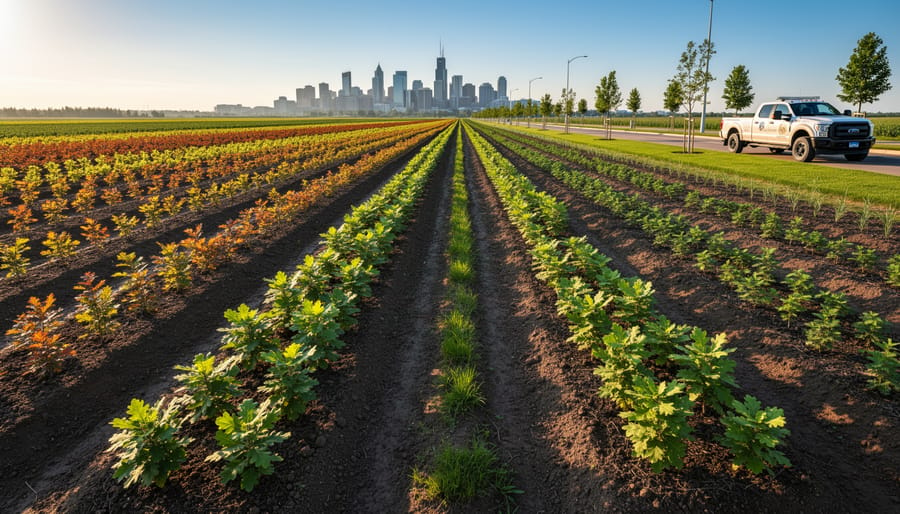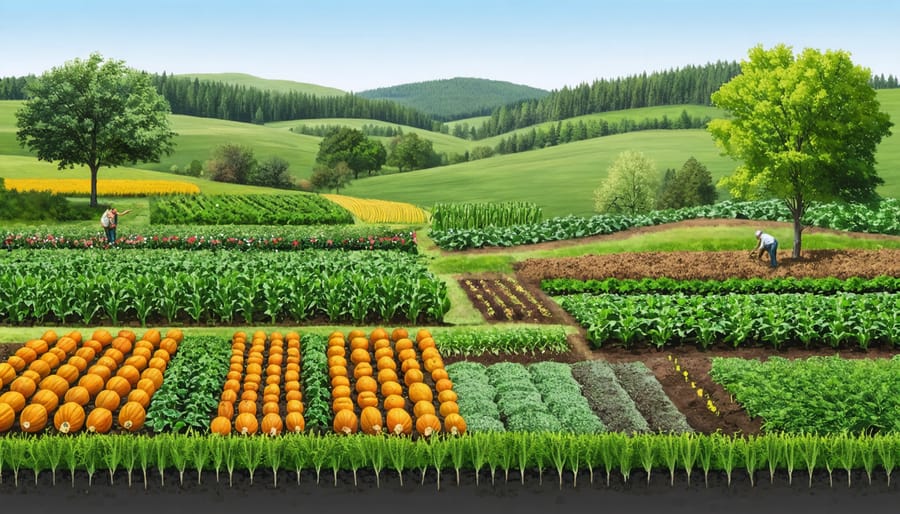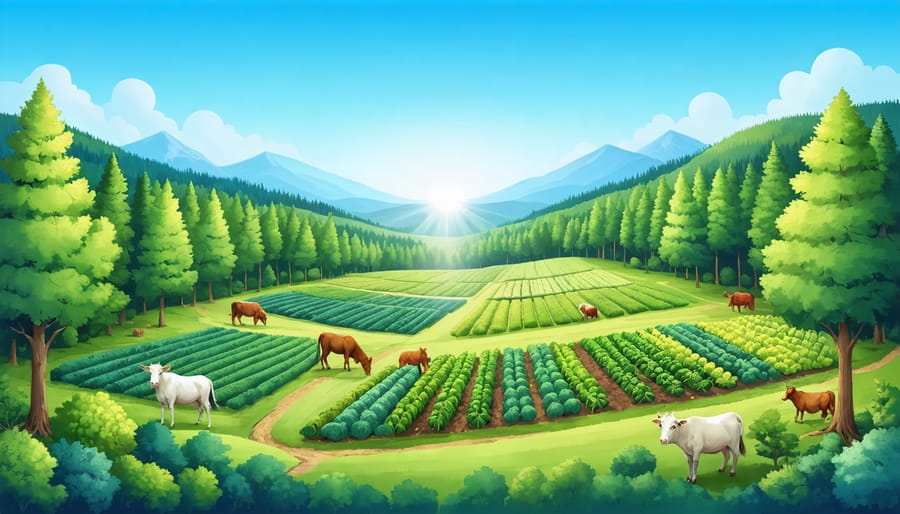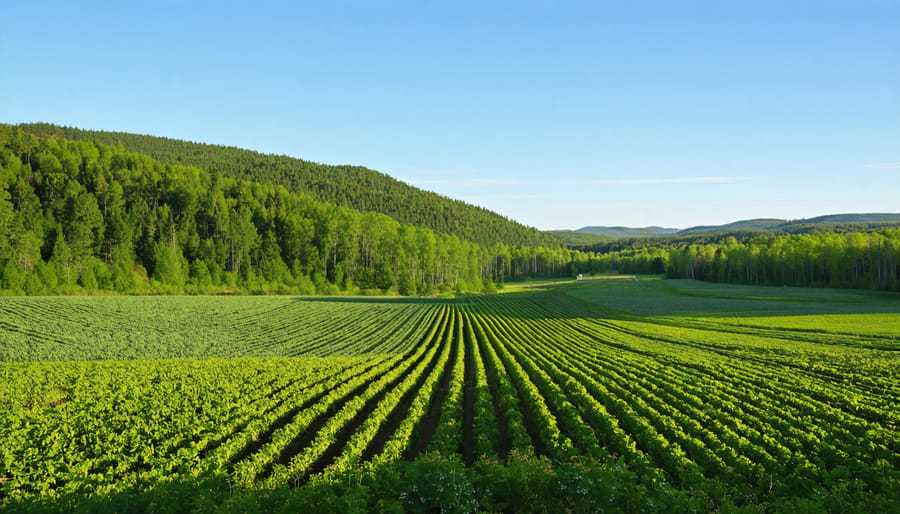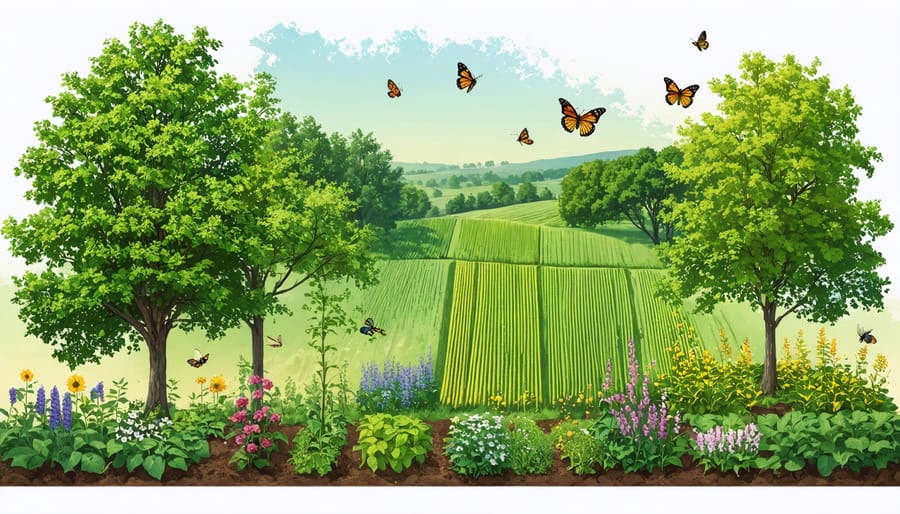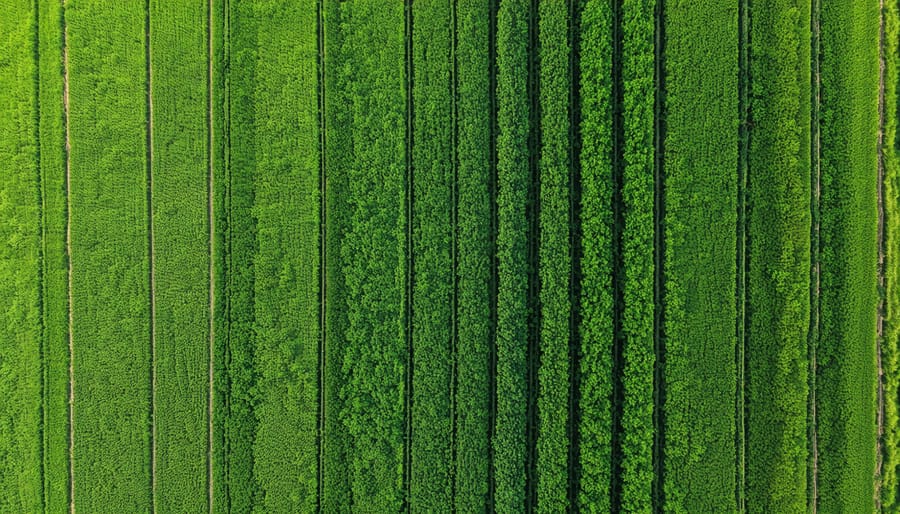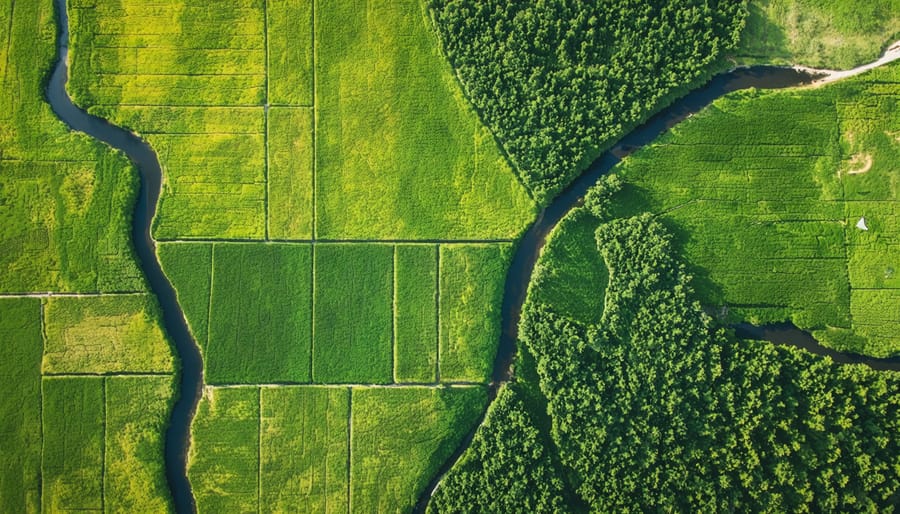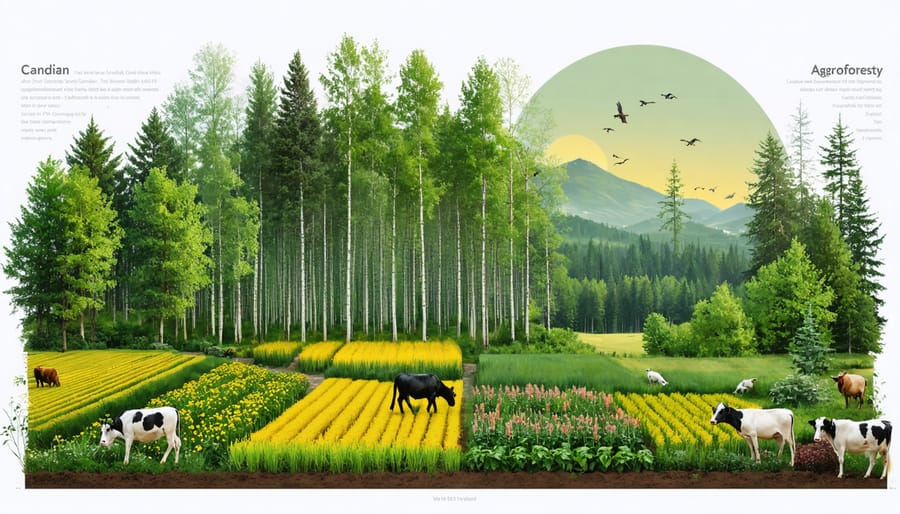Agroforestry transforms traditional farming landscapes into resilient, multi-layered ecosystems where trees, crops, and livestock work in harmony to maximize land productivity. Across Alberta’s diverse agricultural regions, farmers are discovering how this integrated approach delivers exceptional returns – from enhanced soil fertility and natural pest control to creating additional revenue streams through timber, fruits, and nuts. By strategically combining fast-growing shelter belts, fruit-bearing understory plants, and conventional crops, Canadian producers are witnessing up to 40% higher yields while building climate-resistant operations that thrive in our challenging prairie conditions.
Modern agroforestry systems stand as living proof that productivity and environmental stewardship can coexist profitably. Whether you’re managing a small family farm or overseeing large-scale operations, incorporating trees and shrubs into your agricultural system offers practical solutions to common challenges like soil erosion, water management, and declining biodiversity. This time-tested approach, backed by research from Canadian agricultural institutions, provides a sustainable framework for the future of farming in Alberta and beyond.
The Natural Shield: Understanding Agroforestry’s Defense System
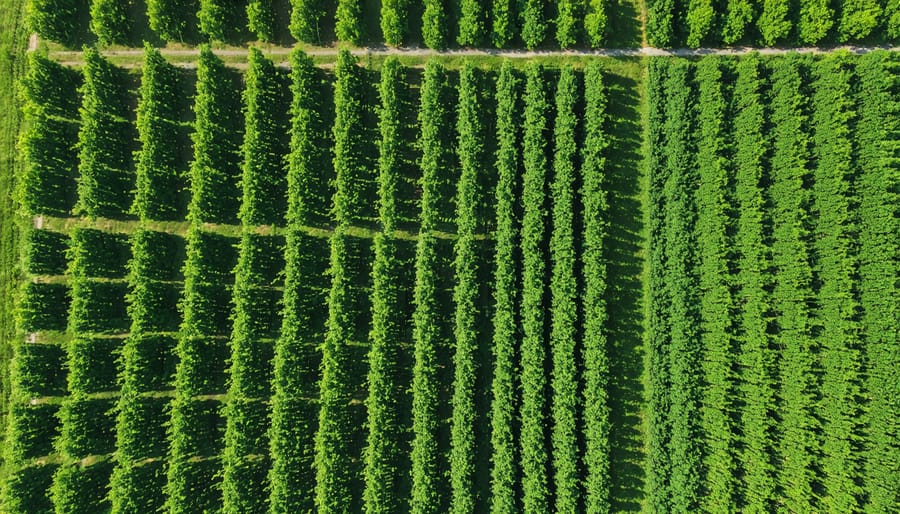
Beneficial Insect Habitats
Integrating trees and shrubs into your farm creates natural sanctuaries for beneficial insects that help control crop pests. These woody elements provide essential shelter, overwintering sites, and alternative food sources that attract and sustain predatory insects throughout the growing season. The resulting biodiversity benefits translate directly to improved pest management.
Common beneficial insects in Alberta’s agroforestry systems include ladybugs, parasitic wasps, and ground beetles. These natural predators help control aphids, caterpillars, and other crop-damaging pests. Native flowering trees like saskatoon and chokecherry provide nectar for adult parasitic wasps, while their larvae feed on pest insects.
Strategic placement of shelterbelts and hedgerows creates corridors that allow beneficial insects to move throughout your fields. For best results, maintain diverse tree species with varying flowering times and include understory plants that flower throughout the season. Leave leaf litter intact during winter to provide essential overwintering habitat for ground-dwelling predators.
Many Alberta farmers report significant reductions in pest pressure after establishing these insect-friendly features, often reducing or eliminating the need for chemical pest control measures.
Plant Diversity Barriers
Creating diverse plant communities in your agroforestry system acts as a natural barrier against pest outbreaks. When you mix different tree species, shrubs, and crops, you establish what farmers like Dave Thompson from Red Deer calls a “living fortress” against harmful insects and diseases. This diversity works by disrupting pest movement patterns and providing habitat for beneficial insects that naturally control pest populations.
Research at the University of Alberta shows that farms with eight or more tree species experience 60% fewer pest outbreaks compared to monoculture plantations. The key is strategic planting combinations – for example, pairing conifers with deciduous trees creates different canopy layers that confuse flying pests and reduce their ability to locate host plants.
Native species like trembling aspen and white spruce, when integrated with crops like canola or wheat, have proven particularly effective in Alberta’s climate. These combinations not only protect against pests but also enhance overall farm resilience through improved soil health and biodiversity. Many local farmers report spending significantly less on pest control after implementing mixed-species plantings in their agroforestry systems.
Alberta’s Winning Combinations: Tree-Crop Partnerships
Shelterbelts That Work Double-Duty
Strategic shelterbelt placement on your farm can do more than just block wind – it can be a powerful ally in pest management. By carefully selecting and positioning trees, you create natural barriers that discourage pest movement while protecting your valuable crops.
Alberta farmer Mike Peterson discovered this dual benefit when he planted a mixed shelterbelt of caragana, green ash, and Colorado spruce around his canola fields. “The diverse tree species attract beneficial insects that help control crop pests,” he explains. “Plus, the physical barrier reduces wind-blown insects from neighbouring fields.”
Research from the University of Alberta shows that shelterbelts with multiple tree species can reduce pest populations by up to 60% compared to unprotected fields. The key is creating habitat diversity that supports natural predators while disrupting pest movement patterns.
To maximize pest control benefits, consider these proven strategies:
– Plant flowering trees to attract pollinators and beneficial insects
– Include evergreens for year-round protection
– Space rows to allow adequate airflow
– Maintain at least three different tree species for biodiversity
Local agriculture extension specialist Sarah Thompson recommends starting with hardy species like caragana and Manitoba maple, gradually adding more diverse species as the shelterbelt establishes. “The initial investment in planning and planting pays off through reduced pest pressure and improved crop yields,” she notes.
Remember to monitor your shelterbelts regularly and maintain proper spacing to ensure they continue providing both wind protection and pest management benefits for years to come.
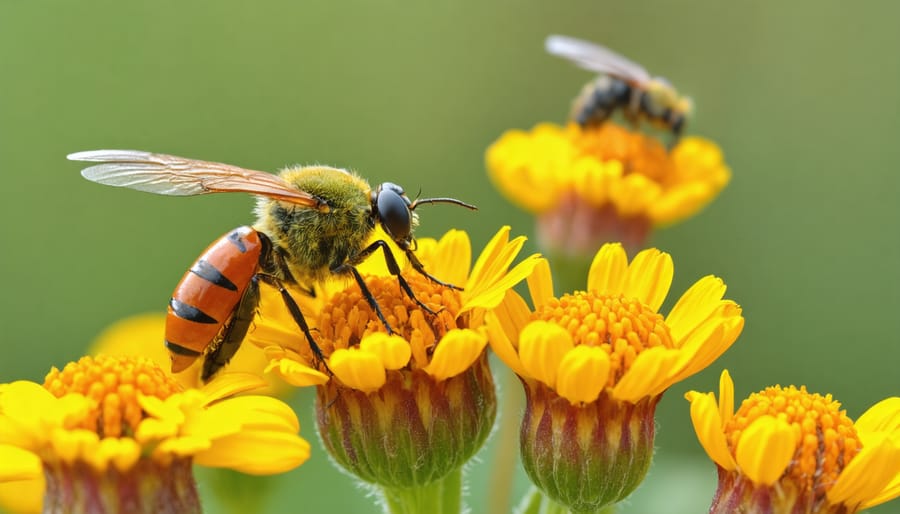
Companion Planting Success Stories
The Smith family farm near Red Deer stands as a shining example of successful companion planting in Alberta’s agroforestry landscape. By integrating saskatoon berries with protective rows of caragana shrubs, they’ve reported a 40% increase in berry yields over the past three years while creating natural windbreaks that protect their crops.
In Lacombe County, Maria Rodriguez transformed her 15-hectare property into a thriving food forest by implementing climate-resilient farming practices. Her innovative approach pairs hazelnuts with nitrogen-fixing sea buckthorn, creating a mutually beneficial growing environment that’s produced consistent yields even during challenging weather conditions.
The Walker Brothers’ operation near Grande Prairie demonstrates the economic potential of thoughtful companion planting. Their silver maple and ginseng combination has not only provided them with two marketable crops but has also reduced the need for artificial shade structures, saving approximately $5,000 per hectare in infrastructure costs.
These success stories highlight how Alberta farmers are adapting traditional companion planting wisdom to our unique growing conditions. The key to their success lies in selecting complementary species that share resources efficiently while providing additional benefits such as natural pest control and soil improvement.
Disease Management Through Smart Design
Air Flow and Humidity Control
Proper air circulation and humidity control are crucial elements in maintaining a healthy agroforestry system. In Alberta’s climate, where conditions can vary significantly throughout the year, strategic tree placement helps create beneficial microclimates that reduce disease pressure. Trees and shrubs should be spaced to allow adequate airflow while still providing necessary shelter benefits.
Consider prevailing wind patterns when designing your layout, typically flowing from northwest to southeast in most Alberta regions. Maintaining 5-7 metre spacing between major tree rows allows sufficient air movement while still offering wind protection. This spacing helps prevent the development of stagnant air pockets where fungal diseases could thrive.
Moisture management is equally important. While shelterbelts reduce evaporation and help retain soil moisture, excessive humidity can promote plant diseases. Installing drainage systems where needed and practicing proper irrigation timing (early morning is best) helps maintain optimal moisture levels. Some farmers in central Alberta have found success using soil moisture sensors to guide their irrigation decisions.
Regular pruning of dense canopy areas improves ventilation and reduces humidity build-up. This is particularly important in areas where fruit trees or other high-value crops are integrated into the system. Remember to clean pruning tools between uses to prevent disease spread.
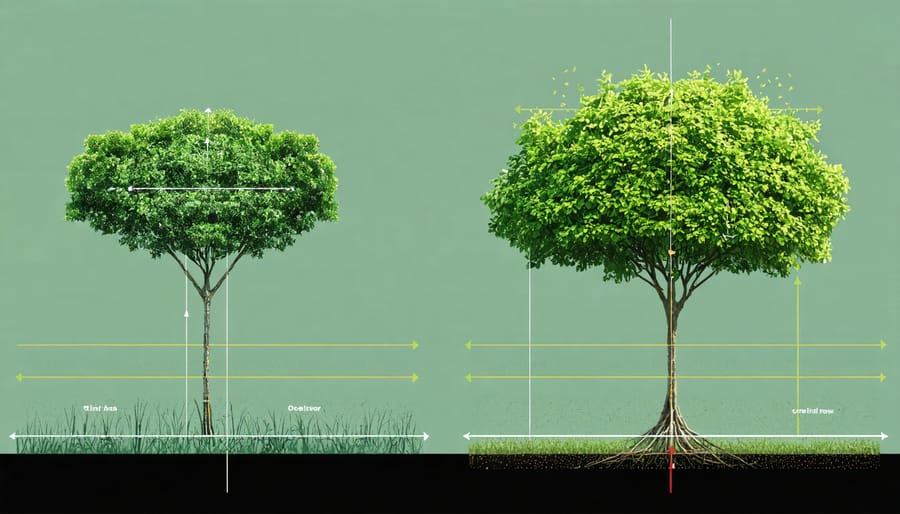
Root Zone Management
Proper root zone management is crucial for preventing soil-borne diseases and maximizing productivity in your agroforestry system. The key lies in strategic tree-crop spacing that helps improve soil health while minimizing competition between species.
For Alberta’s climate conditions, maintain a minimum spacing of 6-8 metres between trees when integrating crops. This spacing allows adequate sunlight penetration and air circulation, reducing moisture buildup that could lead to fungal diseases. Consider your soil type when planning – clay soils may require wider spacing than sandy soils to prevent root competition.
Implementing root barriers at a depth of 60-90 cm can help manage aggressive root systems, particularly when working with species like poplar or willow. These barriers direct root growth downward, allowing shallow-rooted crops to thrive in the upper soil layers.
Monitor root zone health by checking soil moisture levels regularly and watching for signs of stress in your understory crops. A well-managed root zone typically shows even crop growth and minimal signs of nutrient deficiency. Consider using cover crops between tree rows to suppress weeds and add organic matter to the soil system.
Implementation Steps for Your Farm
Site Assessment and Planning
Before implementing agroforestry systems, conducting a thorough site assessment is crucial for success. Start by analyzing your soil composition through professional testing, paying special attention to drainage patterns, pH levels, and organic matter content. In Alberta’s diverse landscape, soil conditions can vary significantly even within a single property.
Consider your land’s topography and microclimate factors, including wind patterns, frost pockets, and sun exposure. These elements will influence species selection and planting arrangements. Map out water sources and existing natural features like windbreaks or water bodies that could benefit your agroforestry design.
When selecting species, prioritize those native to Alberta or well-adapted to your local climate zone. Consider combinations of fast-growing species like hybrid poplars for early returns, alongside slower-growing but valuable hardwoods like maple or oak. For the understory, choose compatible shrubs and perennials that offer additional income streams through berries or medicinal properties.
Take time to observe your land through different seasons, noting areas prone to flooding or drought. Connect with local agricultural extension offices and experienced agroforesters in your region – their practical insights about what works in Alberta’s climate can be invaluable. Remember that successful planning requires thinking both in terms of immediate needs and long-term ecosystem development.
Maintenance and Monitoring
Regular monitoring and maintenance are essential for the long-term success of your agroforestry system. Start by establishing a weekly inspection routine during the growing season, checking for signs of pest activity, disease symptoms, or stress in both trees and crops. Keep detailed records of your observations, including dates, locations, and severity of any issues found.
Maintain proper tree spacing through regular pruning, which helps optimize sunlight penetration and air circulation. This practice significantly reduces the risk of fungal diseases and creates less favourable conditions for pest populations. In Alberta’s climate, schedule major pruning activities for late winter or early spring before the growing season begins.
Implement a seasonal soil testing program to monitor nutrient levels and adjust your fertilization strategy accordingly. Many Alberta farmers find success with autumn soil testing, allowing time to plan amendments for the following spring. Maintain healthy soil biology by avoiding excessive tillage and incorporating organic matter through mulching or cover cropping.
Establish monitoring stations throughout your farm using pest traps and indicator plants to track pest populations. These early warning systems help you respond quickly to emerging threats before they become major problems. Consider joining local farmer networks to share pest monitoring data and management strategies, as many pest issues tend to affect entire regions simultaneously.
Remember to regularly inspect and maintain any infrastructure supporting your agroforestry system, such as irrigation systems, fencing, and windbreaks. This proactive approach helps prevent system failures that could compromise your pest management efforts.
Agroforestry represents a powerful opportunity for Canadian farmers to enhance their operations while contributing to environmental sustainability. By integrating trees and shrubs with conventional farming practices, producers across Alberta and beyond have demonstrated that this approach not only improves soil health and biodiversity but also creates additional revenue streams through diversified products.
The evidence is clear: agroforestry systems can increase farm resilience, provide natural pest control, and help buffer against extreme weather events – challenges that are becoming increasingly relevant to Canadian agriculture. Success stories from local farmers show that while the initial transition requires careful planning and patience, the long-term benefits far outweigh the investment.
As our agricultural sector continues to evolve, implementing agroforestry practices offers a practical path forward that balances productivity with sustainability. Whether starting with a small windbreak or developing a full silvopasture system, every step toward agroforestry contributes to a more resilient farming future. We encourage farmers to connect with local agricultural extension services, join agroforestry networks, and learn from experienced practitioners in their region. Together, we can build a stronger, more sustainable agricultural landscape for generations to come.


